Technology has transformed the financial world. One of the most controversial innovations is high-frequency trading (HFT). By using algorithms and speed advantages, firms execute thousands of trades per second. While HFT adds liquidity, it also raises concerns about fairness and stability.
What Is High-Frequency Trading?
High-frequency trading is a form of algorithmic trading where powerful computers place and cancel orders in fractions of a second.
High-frequency trading uses ultra-low latency networks and co-located servers near exchanges to gain speed advantages. This allows firms to capture small price discrepancies repeatedly, generating profit from scale rather than individual trade size.
Why Does High-Frequency Trading Matter For Markets?
HFT influences every trader, even those not using it.
- Liquidity: HFT often tightens spreads by adding buy and sell orders.
- Volatility: Excessive HFT activity can cause sudden spikes.
- Execution Quality: Retail orders may face slippage against faster algorithms.
- Market Integrity: Critics argue it gives unfair advantages to big firms.
High-frequency trading matters because it shapes spreads, execution, and volatility. For retail traders, the biggest concern is competing with firms that operate thousands of times faster, which can erode profits and distort price discovery.
Advantages And Disadvantages Of HFT
| Advantages | Disadvantages |
| Provides liquidity to markets | Can increase volatility in stress events |
| Reduces spreads for most traders | Unfair speed advantage for big firms |
| Increases trading efficiency | Risk of “flash crashes” |
| Enhances price discovery in liquid assets | Reduces transparency in fragmented markets |
How Do Firms Use High-Frequency Trading?
HFT firms employ several strategies designed to exploit small inefficiencies.
- Market Making: Providing liquidity by posting buy and sell quotes.
- Arbitrage: Exploiting tiny price differences across markets.
- Event Trading: Reacting instantly to news or order flow.
- Latency Arbitrage: Using faster connections to trade ahead of slower participants.
Firms use HFT to generate small profits per trade but repeat this millions of times daily. For example, an algorithm may capture 0.01% profit on each trade, but scale transforms this into substantial earnings.
What Are The Risks Of High-Frequency Trading?
While HFT has benefits, risks must be recognized.
- Flash Crashes: Rapid order cancellations can trigger extreme price swings.
- Systemic Risk: Dependence on algorithms may destabilize markets during outages.
- Market Manipulation: Some HFT strategies resemble spoofing or layering.
- Retail Impact: Retail traders face wider risks when competing with faster algorithms.
The biggest risk of HFT is sudden instability. Algorithms can withdraw liquidity instantly, leaving markets vulnerable to flash crashes and sharp volatility spikes, especially during times of stress.
Practical Advice For Traders Facing HFT
Retail traders cannot compete with HFT in speed, but they can adapt.
- Avoid chasing micro-moves that HFT dominates.
- Focus on higher timeframes where algorithms have less edge.
- Use limit orders instead of market orders to control slippage.
- Choose liquid assets where HFT provides tighter spreads.
Traders facing HFT should prioritize swing trading or position strategies over scalping. Longer-term approaches reduce the impact of execution speed and take advantage of HFT’s liquidity without competing directly with it.
Frequently Asked Questions
Is High-Frequency Trading Legal?
Yes, though certain manipulative practices like spoofing are banned.
Can Retail Traders Use HFT?
Not realistically — the technology costs millions in infrastructure.
Does HFT Benefit Or Harm Markets?
Both. It improves liquidity in normal times but can destabilize markets during stress.
Conclusion
High-frequency trading has reshaped global markets by adding liquidity, reducing spreads, and increasing efficiency. Yet it also raises risks of volatility and fairness. For retail traders, the best approach is not to compete but to adapt — trading longer timeframes, using limit orders, and focusing on strategies that minimize the speed disadvantage.

















